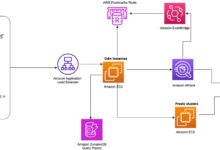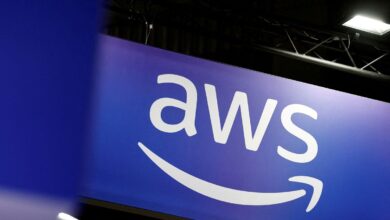AWS Marketplace: 7 Powerful Reasons to Buy & Sell in 2024
Looking for a smarter way to deploy software in the cloud? AWS Marketplace is your one-stop digital catalog for discovering, buying, and deploying software that runs on AWS—fast, secure, and scalable.
What Is AWS Marketplace and How Does It Work?

AWS Marketplace is a curated digital catalog operated by Amazon Web Services (AWS) that enables customers to find, purchase, and deploy third-party software that runs on the AWS Cloud. It simplifies the software acquisition process by integrating licensing, pricing, and deployment directly into the AWS ecosystem. Whether you’re a startup, enterprise, or government agency, AWS Marketplace streamlines access to thousands of software solutions—from machine learning tools to security suites and data analytics platforms.
Core Functionality of AWS Marketplace
At its heart, AWS Marketplace functions as a self-service platform where vendors list their software offerings, and customers can browse, test, and deploy them with just a few clicks. The platform supports various pricing models, including hourly, annual, and perpetual licenses, and integrates seamlessly with AWS billing. This means users can manage software costs alongside their AWS infrastructure expenses in a single invoice.
- Software listings include detailed descriptions, customer reviews, pricing models, and deployment options.
- Users can launch software directly into their AWS environment using pre-configured Amazon Machine Images (AMIs) or container images.
- Integration with AWS Identity and Access Management (IAM) ensures secure access control.
Key Stakeholders: Buyers and Sellers
There are two primary user groups in AWS Marketplace: buyers (AWS customers) and sellers (independent software vendors, or ISVs). Buyers benefit from simplified procurement, trusted software, and rapid deployment. Sellers gain global reach, reduced sales friction, and access to AWS’s vast customer base. AWS handles billing, compliance, and distribution logistics, allowing vendors to focus on innovation.
“AWS Marketplace has transformed how we distribute our security software—our time-to-revenue dropped from months to minutes.” — CTO of a cybersecurity ISV
Top 7 Benefits of Using AWS Marketplace for Businesses
Organizations of all sizes are turning to AWS Marketplace for its agility, cost-efficiency, and integration capabilities. Here’s why it’s becoming a go-to platform for cloud software procurement.
1. Accelerated Time-to-Value
One of the biggest advantages of AWS Marketplace is speed. Traditional software procurement can take weeks or months due to licensing negotiations, procurement approvals, and manual installations. With AWS Marketplace, users can deploy software in minutes. Pre-configured AMIs and automated deployment tools eliminate setup delays, enabling teams to start using software immediately.
- Instant deployment reduces onboarding time for new tools.
- Perfect for DevOps teams needing rapid access to development tools.
- Supports agile workflows by removing procurement bottlenecks.
2. Simplified Billing and Cost Management
AWS Marketplace consolidates software costs into your existing AWS bill. This eliminates the need for separate vendor invoices, purchase orders, or credit card payments. You can track software spending alongside compute, storage, and networking costs using AWS Cost Explorer and Budgets.
- Unified billing improves financial transparency.
- Enables centralized approval workflows for software purchases.
- Supports chargeback and showback models across departments.
3. Trusted and Verified Software
All software listed on AWS Marketplace undergoes a rigorous vetting process. AWS verifies vendor legitimacy, software functionality, and compliance with security standards. This reduces the risk of downloading malware or unlicensed software. Additionally, customer reviews and ratings help buyers make informed decisions.
- Software is tested for AWS compatibility and performance.
- Vendors must comply with AWS Partner Network (APN) requirements.
- Regular audits ensure ongoing compliance and security.
4. Flexible Pricing Models
AWS Marketplace offers a variety of pricing options to suit different business needs. These include:
- Pay-as-you-go: Hourly or per-second billing based on usage.
- Annual subscription: Upfront or recurring annual fees.
- Free trials: Risk-free evaluation periods (e.g., 7–30 days).
- Bring Your Own License (BYOL): Use existing software licenses on AWS.
5. Seamless Integration with AWS Services
Software from AWS Marketplace is designed to work natively with AWS services like EC2, S3, Lambda, and RDS. This ensures optimal performance, security, and scalability. For example, a database monitoring tool can automatically pull metrics from CloudWatch, or a backup solution can store data in S3 with encryption enabled.
- Automated integration reduces configuration errors.
- Supports hybrid and multi-cloud deployments via AWS Outposts and Local Zones.
- Leverages AWS’s global infrastructure for low-latency access.
6. Global Reach and Scalability
For software vendors, AWS Marketplace provides instant access to millions of AWS customers across 200+ countries. This global distribution network eliminates the need for complex international sales and billing setups. For buyers, it means access to innovative tools from around the world without logistical hurdles.
- Vendors can scale their business without building a global sales team.
- Buyers can discover niche or region-specific solutions easily.
- Supports multiple currencies and languages for international transactions.
7. Enhanced Security and Compliance
Security is a top priority in AWS Marketplace. All software must adhere to AWS security best practices, including encryption, patch management, and vulnerability scanning. Many listings are compliant with standards like GDPR, HIPAA, SOC 2, and FedRAMP, making them suitable for regulated industries.
- Automated compliance checks reduce audit burden.
- Integration with AWS Security Hub and GuardDuty enhances threat detection.
- Vendors are required to disclose security practices and update software regularly.
How to Buy Software on AWS Marketplace: A Step-by-Step Guide
Purchasing software on AWS Marketplace is straightforward and user-friendly. Whether you’re a developer, IT admin, or procurement officer, this guide will walk you through the process.
Step 1: Access AWS Marketplace
Navigate to AWS Marketplace and sign in with your AWS account. If you don’t have one, you can create it for free. Once logged in, you’ll see a clean interface with categories like AI & Machine Learning, Security, DevOps, and Analytics.
- Use the search bar to find specific software (e.g., “Palo Alto Networks”, “MongoDB”).
- Filter results by pricing model, AWS region, or customer rating.
- Explore featured products or vendor spotlights for curated recommendations.
Step 2: Evaluate Software Options
Before purchasing, take time to review the product details. Each listing includes:
- A detailed description of features and use cases.
- Customer reviews and ratings (out of 5 stars).
- Technical specifications, including supported AWS regions and instance types.
- Deployment options (e.g., AMI, container, SaaS).
- Pricing details and free trial availability.
Many vendors offer free trials or free tier options. These are ideal for testing software before committing to a paid plan.
Step 3: Deploy and Configure
Once you’ve selected a product, click “Continue to Subscribe”. You’ll be prompted to accept the vendor’s End User License Agreement (EULA). After subscription, you can launch the software directly into your AWS environment.
- For EC2-based software, AWS automatically provisions an instance with the software pre-installed.
- For SaaS products, you’ll receive a URL or API key to access the service.
- Use AWS CloudFormation templates for automated, repeatable deployments.
After deployment, configure the software using the AWS Management Console or CLI. Most tools integrate with AWS services like IAM for access control and CloudWatch for monitoring.
How to Sell on AWS Marketplace: A Guide for ISVs
For independent software vendors (ISVs), AWS Marketplace offers a powerful channel to monetize cloud software. Here’s how to get started as a seller.
Becoming an AWS Marketplace Seller
To list your software, you must first join the AWS Partner Network (APN). The APN provides resources, technical support, and co-marketing opportunities. Once enrolled, you can apply to become a seller on AWS Marketplace through the AWS Solutions Provider Program.
- Complete the seller onboarding process, including identity verification.
- Provide technical documentation and software artifacts (e.g., AMIs, Docker images).
- Define your pricing model and billing preferences.
Preparing Your Software for Listing
Your software must meet AWS’s technical and security requirements. This includes:
- Creating a hardened Amazon Machine Image (AMI) with your software pre-installed.
- Ensuring compatibility with AWS best practices for security and performance.
- Providing clear user documentation and support channels.
- Supporting automated deployment via CloudFormation or Terraform.
AWS provides a comprehensive guide for packaging and submitting software.
Marketing and Monetization Strategies
Once your product is live, focus on visibility and customer acquisition. AWS Marketplace offers several tools to help:
- Promotions: Offer limited-time discounts or free trials to attract users.
- Private Offers: Create custom pricing for specific customers or enterprises.
- Co-Marketing: Collaborate with AWS on webinars, case studies, or featured placements.
- Customer Reviews: Encourage satisfied users to leave feedback to build trust.
“After launching on AWS Marketplace, our customer acquisition cost dropped by 40%, and our sales cycle shortened significantly.” — CEO of a data analytics startup
Popular Software Categories in AWS Marketplace
AWS Marketplace hosts over 15,000 products across diverse categories. Understanding these categories helps buyers find the right tools and sellers identify market opportunities.
Security, Identity, and Compliance
This is one of the most popular categories, featuring tools for threat detection, encryption, identity management, and compliance monitoring. Examples include:
- Palo Alto Networks VM-Series Firewall
- Fortinet FortiGate Next-Gen Firewall
- McAfee MVISION Cloud
- Aqua Security for container protection
These tools help organizations secure their AWS environments and meet regulatory requirements.
AI, Machine Learning, and Data Science
With the rise of AI, this category has seen explosive growth. Vendors offer pre-trained models, data labeling tools, and MLOps platforms. Popular listings include:
- TensorFlow and PyTorch optimized AMIs
- DataRobot Automated Machine Learning
- H2O.ai Driverless AI
- Amazon SageMaker integrations
These tools accelerate AI development and deployment on AWS infrastructure.
DevOps and IT Management
This category includes CI/CD tools, monitoring solutions, backup software, and configuration management platforms. Examples:
- Jenkins by Bitnami
- Datadog Monitoring
- Veeam Backup for AWS
- Ansible by Red Hat
These tools enhance operational efficiency and support cloud-native development practices.
Business Applications and SaaS
From CRM to ERP and collaboration tools, this category offers enterprise-grade SaaS applications. Examples include:
- Salesforce integrations
- Oracle Database Cloud Service
- Zoom for AWS
- SAP HANA on AWS
These solutions enable seamless integration between on-premises systems and the cloud.
Best Practices for Maximizing Value from AWS Marketplace
To get the most out of AWS Marketplace, both buyers and sellers should follow proven strategies.
For Buyers: Smart Procurement Tips
Organizations should treat AWS Marketplace as a strategic procurement tool, not just a software catalog.
- Use AWS Budgets: Set spending limits for software purchases to avoid cost overruns.
- Leverage Free Trials: Test software before committing to long-term contracts.
- Monitor Usage: Use AWS Cost Explorer to track software spend and optimize licenses.
- Centralize Access: Use AWS Organizations to manage software access across accounts.
- Review Vendor SLAs: Ensure uptime, support, and security commitments meet your needs.
For Sellers: Growth and Optimization
ISVs can grow their business by optimizing their AWS Marketplace presence.
- Optimize Product Listings: Use clear titles, compelling descriptions, and high-quality screenshots.
- Offer Flexible Pricing: Include free tiers, pay-as-you-go, and annual options.
- Gather Customer Feedback: Use reviews to improve product and service quality.
- Leverage AWS Co-Marketing: Participate in AWS events, webinars, and case studies.
- Monitor Performance Metrics: Track conversion rates, trial-to-paid ratios, and churn.
Integration with AWS Ecosystem Tools
Maximize value by integrating AWS Marketplace software with core AWS services.
- Use AWS Systems Manager to manage software configurations at scale.
- Integrate with AWS CloudTrail for audit logging and compliance.
- Leverage AWS Lambda for serverless automation of marketplace tools.
- Use AWS Service Catalog to standardize approved software across teams.
Future Trends and Innovations in AWS Marketplace
AWS Marketplace is continuously evolving to meet changing market demands. Here are key trends shaping its future.
Expansion of SaaS Offerings
While EC2-based software remains popular, SaaS (Software as a Service) listings are growing rapidly. SaaS products offer easier management, automatic updates, and usage-based billing. AWS is investing in tools to help vendors deliver SaaS solutions seamlessly through the marketplace.
- SaaS contracts are now supported with metered billing and user-based pricing.
- AWS Marketplace for SaaS enables vendors to manage subscriptions and usage tracking.
- Integration with AWS Marketplace Metering Service allows precise usage reporting.
AI-Powered Recommendations
AWS is leveraging machine learning to improve product discovery. Future updates may include personalized recommendations based on user behavior, workload patterns, and peer usage. This will help buyers find relevant tools faster and increase conversion for sellers.
- AI-driven search ranking could prioritize high-performing or trending products.
- Contextual suggestions (e.g., “Users who bought X also used Y”) will enhance discovery.
- Natural language search may allow users to find software using conversational queries.
Enhanced Governance and Procurement Controls
Enterprises demand stronger governance over cloud software spending. AWS is enhancing controls for procurement teams, including:
- Approval workflows for software purchases.
- Policy-based restrictions on which products can be deployed.
- Integration with enterprise procurement systems via APIs.
- Audit trails for compliance and financial reporting.
“We expect AWS Marketplace to become the de facto standard for cloud software procurement, much like app stores did for mobile.” — Cloud Analyst at Gartner
Common Challenges and How to Overcome Them
While AWS Marketplace offers many benefits, users may encounter challenges. Here’s how to address them.
Challenge 1: Cost Visibility and Control
Because software costs are bundled with AWS usage, it can be hard to track spending per application. Without proper monitoring, costs can spiral.
Solution: Use AWS Cost Allocation Tags to tag resources by software, team, or project. Combine this with AWS Budgets to set alerts and enforce spending limits.
Challenge 2: Vendor Lock-In Concerns
Some buyers worry that using marketplace software ties them too closely to AWS, making migration difficult.
Solution: Choose vendors that support open standards, containerization (e.g., Docker, Kubernetes), and multi-cloud deployment. Use BYOL options when available to retain licensing flexibility.
Challenge 3: Integration Complexity
While most software integrates well with AWS, some tools require manual configuration or lack deep integration.
Solution: Prioritize products with AWS Quick Starts, CloudFormation templates, or AWS Partner badges. Engage vendor support during deployment for smooth integration.
What is AWS Marketplace?
AWS Marketplace is a digital catalog from Amazon Web Services that allows customers to discover, purchase, and deploy third-party software that runs on AWS. It simplifies software procurement by integrating billing, deployment, and management into the AWS ecosystem.
How do I subscribe to software on AWS Marketplace?
To subscribe, visit AWS Marketplace, search for the software, click “Continue to Subscribe”, accept the EULA, and launch the product into your AWS environment. Billing is added to your AWS invoice.
Can I sell my software on AWS Marketplace?
Yes. Independent software vendors (ISVs) can list their products by joining the AWS Partner Network (APN) and enrolling in the AWS Solutions Provider Program. AWS handles billing, distribution, and customer support logistics.
Are there free options on AWS Marketplace?
Yes. Many vendors offer free trials, freemium models, or permanently free tiers. These allow users to test software before purchasing. Look for “Free Trial” or “Free Tier” labels on product listings.
Is AWS Marketplace secure?
Yes. AWS vets all software and vendors for security, compliance, and performance. Products must adhere to AWS security standards, and many are compliant with regulations like GDPR, HIPAA, and SOC 2.
In conclusion, AWS Marketplace is revolutionizing how businesses buy and sell cloud software. With its ease of use, global reach, and deep integration with AWS services, it offers unmatched value for both buyers and sellers. Whether you’re looking to deploy a firewall, launch an AI model, or monetize your SaaS product, AWS Marketplace provides a trusted, scalable platform to achieve your goals. As cloud adoption grows, AWS Marketplace will continue to evolve, offering smarter discovery, better governance, and expanded innovation opportunities for the global tech community.
Recommended for you 👇
Further Reading:









